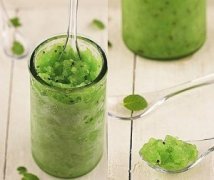Individual coffee in the coffee training class

Coffee won't all melt when thrown into the water. The maximum extraction rate of roasted coffee beans is 30% (substances that can be dissolved in water divided by the total weight of coffee).
1. Whether it's French pressure, Philharmonic pressure, all kinds of pressure, or espresso. The range of the best extraction rate is 18% Mui 21%. Insufficient extraction (less than 18%) means that the flavor of coffee is not fully dissolved in water, and excessive extraction (more than 21%) means that the miscellaneous flavor of coffee is integrated into the water. Baristas use this as the framework to make the perfect cup of coffee.
two。 Instant coffee can be completely dissolved in water. It shows that instant coffee has been extracted and reduced to powder in some chemical way.
Coffee is actually part of the fruit. Since it is necessary to bake coffee, in a sense (not absolutely), coffee has changed from fruit to dried fruit.
1. At Brista Coffee training School, we drank the plum flavor of the coffee, the citrus flavor was actually its predecessor, combined with the flavor of the fruit in the local environment, and the almond flavor, walnut flavor was partially carbonized after baking. When drinking cocoa (a bitter taste), syrup (a combination of bitterness and sweetness) is a deeply baked, carbonized taste.
two。 In view of one point, the coffee training teacher told us why coffee is popular for roasting. Like steak, the outside is charred and tender inside, there is cocoa and dried fruit flavor brought by carbonization on the outside, and the inside still retains the sweet and sour fruit. The taste is richer in this way.
3. Many people tirelessly pursue a certain flavor of the theory of taste. But it ignores the rules of flavor wheel arrangement. From bottom to top, it is actually a gradual distribution of the degree of carbonization. At the bottom, the smell of smoke is scorched, and at the top is the fragrance of flowers.
4. The most important thing is that coffee is not only bitter, at least good coffee is not the case. You will understand this deeply after taking a coffee class in Chongqing, because we will drink coffee from different regions and countries on the way to class. Different grades of coffee is a good teaching method for distinguishing coffee and exercising taste.
Important Notice :
前街咖啡 FrontStreet Coffee has moved to new addredd:
FrontStreet Coffee Address: 315,Donghua East Road,GuangZhou
Tel:020 38364473
- Prev

Smoothie making teaches you to make kiwifruit smoothies that I like.
Today is another hot day in Chongqing. I have been studying coffee courses at Brista Coffee training School for some time. It is time for me to have a drink class today. I came to the coffee school early in the morning to review what I learned yesterday. The first lesson today is to learn how to make smoothies. Drinks that fit this season are the only ones that can bring freshness and coolness in this hot summer day.
- Next

How long can I learn to pull coffee? The skill of pulling flowers in coffee
Friends who like coffee flowers, I am glad that you, like me, also like coffee and are willing to pay time for coffee to study. To be a professional barista, you must first learn to make coffee. Caffeine is only one of the skills that baristas possess. Only through constant practice and correcting mistakes can you gain something from failure. I can see a lot of hype on the Internet.
Related
- Beginners will see the "Coffee pull flower" guide!
- What is the difference between ice blog purified milk and ordinary milk coffee?
- Why is the Philippines the largest producer of crops in Liberia?
- For coffee extraction, should the fine powder be retained?
- How does extracted espresso fill pressed powder? How much strength does it take to press the powder?
- How to make jasmine cold extract coffee? Is the jasmine + latte good?
- Will this little toy really make the coffee taste better? How does Lily Drip affect coffee extraction?
- Will the action of slapping the filter cup also affect coffee extraction?
- What's the difference between powder-to-water ratio and powder-to-liquid ratio?
- What is the Ethiopian local species? What does it have to do with Heirloom native species?

